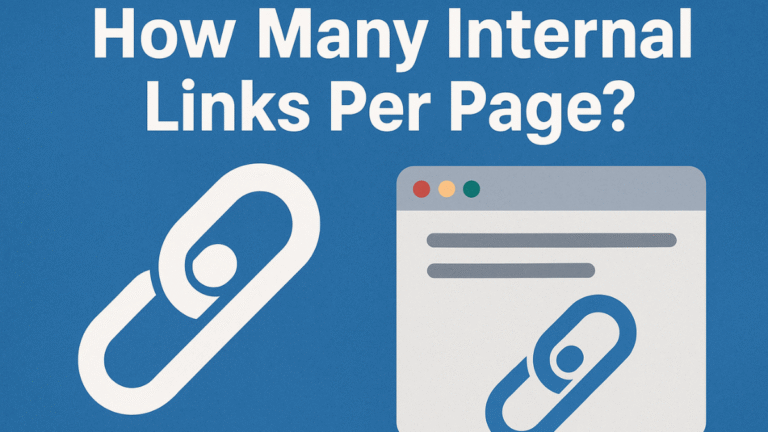Introduction to SEO Optimization
Search Engine Optimization (SEO) serves as a foundational element for the success of any website aiming to attract organic traffic. In today’s digital landscape, understanding how to optimize your website for search engines is essential not only for visibility but also for ensuring that your content reaches its intended audience. As search engines like Google continuously evolve, so too do the strategies that webmasters must implement to improve their rankings and generate greater online presence.
At its core, SEO encompasses a myriad of techniques designed to boost a website’s visibility on search engine results pages (SERPs). By tailoring content, enhancing site architecture, and leveraging backlinks, website owners can effectively enhance their online marketing efforts. Organic search traffic, which derives from unpaid methods, is invaluable; it signifies that users actively seek out content, suggesting they are more likely to convert into customers or take desired actions on your site.
The importance of SEO cannot be understated. As the competition in various industries intensifies, implementing effective SEO strategies has become a prerequisite for success. A higher ranking in search results translates into increased website traffic, brand credibility, and ultimately, improved revenue. However, many individuals and organizations still overlook the potential impact of SEO, often relegating it to a mere afterthought rather than a comprehensive strategy to drive results.
As you delve deeper into this guide, you will gain insights into the numerous facets and methodologies involved in optimizing websites for search engines. By effectively applying these techniques, you enhance your chances of commanding the attention of search engine users, thereby amplifying your online presence. This comprehensive understanding forms a crucial foundation as you explore practical applications and nuances that contribute to successful SEO practices.
Understanding Search Engine Algorithms
Search engine algorithms play a pivotal role in determining how websites are ranked and displayed on search engine results pages (SERPs). Search engines, particularly Google, utilize sophisticated algorithms that consider multiple factors to assess the relevance and quality of a website. These algorithms are designed to provide users with the most pertinent results possible based on their search queries. As such, understanding these algorithms is essential for anyone looking to optimize a website for search engines.
One critical aspect of search engine algorithms is relevance. This refers to how closely a webpage’s content matches the user’s query. Search engines employ various techniques, including keyword analysis and natural language processing, to ascertain whether content aligns with search intent. Websites that provide clear, informative, and engaging content are generally favored in rankings. Hence, part of learning how to optimize a website for search engines is understanding which keywords are relevant and how to effectively incorporate them into the content without appearing forced.
User experience is another key element evaluated by search engine algorithms. Factors such as website loading speed, mobile-friendliness, and ease of navigation are included in the algorithm’s assessment. A website that offers a seamless and enjoyable experience for visitors is more likely to rank higher. This means that your optimization strategies should also encompass improving these user experience components, which ultimately leads to increased visitor retention and lower bounce rates.
Lastly, website authority significantly influences search engine rankings. This is typically measured by backlinks from reputable sources, social media presence, and the overall trustworthiness of the site. Building a strong online reputation and earning high-quality backlinks can directly affect how search engines perceive your site’s credibility. By focusing on these critical factors of search engine algorithms—relevance, user experience, and authority—you create a robust foundation for optimizing your website effectively.
Conducting Keyword Research
Keyword research is a critical component in the process of how to optimize a website for search engines. It involves identifying the terms and phrases that potential visitors use when searching for information related to your niche. By understanding what keywords resonate with your target audience, you can create content that aligns with their search intent, ultimately enhancing your website’s visibility in search engine results.
To begin, consider utilizing tools such as Google Keyword Planner, Ahrefs, or SEMrush. These platforms provide valuable insights into keyword search volumes, competition levels, and related terms. Start your research by entering broad topics related to your niche; the tools will generate a list of relevant keywords. Look for long-tail keywords, which are often less competitive and can attract a more targeted audience. For example, instead of focusing solely on “SEO,” you might explore “how to optimize website for search engines” or “best practices for SEO content writing.”
Another effective technique is to analyze the keywords that competitors are ranking for. By examining their content strategy, you can identify gaps and opportunities in your own keyword targeting. Additionally, leveraging social media and forums can unveil trending topics and keywords that resonate with your audience, enabling you to optimize your content more effectively.
Once you have compiled a list of targeted keywords, it is crucial to incorporate them organically into your content. Aim to naturally integrate your primary keyphrase, “how to optimize website for search engines,” within headings, subheadings, and throughout the body text. This approach not only improves readability but also signals to search engines the relevance of your content. Remember to avoid keyword stuffing; maintaining a natural flow in your writing is essential for both user experience and ranking purposes.
On-Page SEO Techniques
On-page SEO plays a critical role in optimizing individual web pages to improve their visibility and relevance in search engine results. One of the most fundamental strategies is optimizing meta titles and descriptions. The meta title should accurately reflect the content of the page while incorporating relevant keywords. A compelling description can enhance click-through rates, making it essential to craft a concise yet informative summary that also contains pertinent keywords. Aim for a title around 60 characters and a description within 155 characters to ensure complete visibility in search results.
Headers also carry significant weight in on-page SEO. Proper use of H1, H2, and H3 tags can enhance the structure of the content, making it easier for search engines to understand the page hierarchy. The primary keyword should ideally feature in the H1 tag, while secondary keywords may be integrated into subheadings. This not only helps with SEO but also improves readability for the audience, allowing users to quickly locate the information they seek.
Another important aspect is optimizing images on the webpage. Search engines cannot interpret images in the same way humans can, so incorporating appropriate alt text is crucial. This text should succinctly describe the image while, where applicable, including relevant keywords to further enhance the page’s search engine optimization. Ensure that images are named descriptively and are compressed to load quickly, as page speed is a ranking factor.
Lastly, maintaining an appropriate keyword density is vital. Overuse of keywords can lead to keyword stuffing, which not only undermines the quality of the content but can also result in penalties from search engines. Conversely, too little keyword use may fail to signal the page’s relevance. Aim for a balanced and varied keyword strategy that keeps both search engines and readers engaged without sacrificing readability.
Creating Quality Content
To optimize a website for search engines, producing high-quality content is paramount. Content that provides genuine value not only captures user interest but also enhances the site’s credibility in the eyes of search engines. Search engines prioritize content that answers user queries effectively, allowing websites that adhere to this principle to rank higher. Therefore, a fundamental strategy involves understanding the target audience’s needs and tailoring content to address those needs comprehensively.
Engaging and informative articles should be structured clearly, with a logical flow that guides the reader through the subject matter. Utilizing techniques such as headlines, bullet points, and short paragraphs can facilitate easier reading, further encouraging visitors to stay on the page. Furthermore, integrating the focus keyword, “how to optimize website for search engines,” throughout the content helps search engines identify the main topic, but it is crucial to maintain a natural usage to avoid keyword stuffing.
Incorporating multimedia elements, such as images and videos, can also significantly enhance content quality. Visual aids can break up text-heavy sections, making information more digestible and engaging. Additionally, including relevant images with optimized alt tags can improve a website’s visibility in image search results, providing another avenue for attracting traffic. Videos can illustrate complex concepts more effectively than text alone, catering to different learning preferences and keeping users engaged longer.
It is essential to ensure that the content is original and well-researched. Citing credible sources not only bolsters trustworthiness but can also result in backlinks from other reputable sites, further aiding in SEO. Regularly updating existing content to reflect current trends and information can maintain its relevancy and help the website stay competitive in the search engine results pages. By prioritizing quality content that meets user needs, websites can improve both user satisfaction and search engine performance.
Improving Website Structure and Navigation
Creating an intuitive website structure is crucial for both user experience and search engine optimization. A clear hierarchy allows visitors to navigate effortlessly through your website while helping search engines understand the organization of your content. A well-structured website enhances the likelihood of higher search engine rankings, as it ensures that search engines can crawl and index your pages effectively.
To achieve an optimal website structure, start by establishing a logical hierarchy. Prioritize your primary content categories and gradually drill down into subcategories and individual pages. This organization aids users in finding relevant information quickly and enables search engines to identify content relationships. Furthermore, a consistent page layout throughout the site can contribute significantly to enhancing user experience.
Another essential aspect of website structure is internal linking. This strategy involves connecting related pages within your website, which not only keeps users engaged but also allows search engines to discover and index your content more efficiently. For instance, linking various blog posts or products can guide users to further relevant information while distributing page authority across your site. Implementing contextual links within your content can also enhance the relevance of various pages, promoting better visibility in search results.
Additionally, URL optimization plays a vital role in structuring your website for search engines. Utilize descriptive, meaningful URLs that reflect the content of the page, as this can aid both user comprehension and search engine indexing. Incorporating relevant keywords into the URL structure can bolster search visibility but should be done prudently to avoid unnecessary complexity.
Incorporating these principles when optimizing your website structure and navigation will not only lead to a better user experience but will also be crucial in how to optimize website for search engines. Achieving a streamlined, intuitive layout accompanied by effective internal links and optimized URLs can greatly influence your website’s overall performance and visibility in search engine results.
Mobile Optimization and Responsive Design
In the current digital landscape, mobile optimization has become crucial for websites, given that a significant portion of web traffic now comes from mobile devices. To ensure a positive user experience, responsive design is paramount. This approach enables websites to adapt their layout and functionality according to the screen size and resolution of the device being used, whether it be a smartphone, tablet, or desktop computer. Failing to practice mobile optimization can drastically hinder user engagement and, ultimately, lead to decreased search engine rankings.
Responsive design positively influences SEO rankings by meeting the criteria set forth by search engines like Google. Search engines prioritize mobile-friendly websites and tend to rank them higher in search results. A website that is not optimized for mobile can suffer from increased bounce rates, as users are likely to leave if the site does not display properly or is difficult to navigate. Employing a responsive design helps mitigate these issues, enhancing both user experience and search engine visibility.
To ensure that your website is mobile-friendly, several practical steps should be taken. First, testing for mobile responsiveness is vital. Utilize tools like Google’s Mobile-Friendly Test to evaluate how well your site performs across various devices. This tool will provide immediate feedback on any deficiencies that may need addressing. Additionally, performance checks should be conducted to analyze loading times and overall functionality. It’s essential to optimize images and utilize compressed files to reduce loading times, as mobile users are often more impatient than desktop users.
In conclusion, investing in mobile optimization and responsive design is no longer optional but a necessity in today’s digital age. By ensuring a seamless experience across all devices, you can improve user engagement and enhance your website’s standing in search engine rankings, thus adhering to best practices on how to optimize a website for search engines effectively.
Monitoring and Analyzing SEO Performance
Effective optimization of a website for search engines extends beyond initial implementation; it involves continuous monitoring and analysis of performance metrics. Utilizing tools such as Google Analytics and Google Search Console is vital for gaining insights into website traffic, user behavior, and overall SEO effectiveness. These tools provide invaluable data that can guide strategic improvements to enhance visibility and engagement.
Key metrics to monitor include organic traffic, bounce rate, average session duration, and conversion rate. Organic traffic reflects the number of visitors arriving through search engine results, providing insight into the effectiveness of SEO strategies. A high bounce rate may indicate that the content does not meet user expectations, necessitating revisions to better align with search intent. Average session duration helps assess user engagement, while conversion rate measures the percentage of visitors completing desired actions, such as making a purchase or signing up for a newsletter.
In addition to these metrics, it is essential to analyze position tracking data, which displays keyword rankings over time. Understanding how your site ranks for targeted keywords can help inform your content strategy and identify areas for improvement. Regularly reviewing this data offers the opportunity to determine what works and what may require adjustment.
To make informed decisions based on data analysis, it is recommended to set specific goals for your SEO campaigns. By integrating key performance indicators that directly align with these objectives, you can focus your efforts on the most impactful areas. Regularly revisiting and revising your goals ensures that your approach evolves in line with industry changes and user behavior trends.
Ultimately, continuous monitoring and analyzing of your SEO performance not only facilitate timely optimizations but also empower your website to maintain its competitiveness in the digital landscape.
Conclusion and Next Steps
As we have explored throughout this guide on how to optimize a website for search engines, it is essential to recognize that effective search engine optimization (SEO) is an ongoing process that requires dedication and adjustment. From understanding keyword research to enhancing on-page elements such as meta tags and content structure, every aspect plays a pivotal role in improving your website’s visibility. Moreover, technical SEO considerations, like site speed and mobile responsiveness, cannot be overlooked, as they contribute significantly to user experience and, consequently, search rankings.
Moving forward, it is crucial to implement the strategies discussed in this article. Start by conducting a comprehensive audit of your current website to identify areas that require optimization. Prioritize the adjustments that can deliver the most immediate results, such as optimizing title tags and enhancing site speed. Additionally, consider developing a content calendar to ensure that you consistently produce new and relevant content, which is beneficial for both users and search engines.
Furthermore, engage in continuous learning about evolving SEO practices. The digital landscape is dynamic, with search engine algorithms frequently updated. Staying informed about best practices and algorithm changes will equip you with the necessary tools to adapt your strategy effectively. Consider leveraging online resources, such as SEO blogs, podcasts, or expert webinars, that provide insights and guidance on optimizing your website for search engines.
In conclusion, the journey of SEO is iterative. By taking consistent and deliberate steps, you can significantly enhance your website’s presence in search results. Never underestimate the power of persistence and adaptation in achieving long-term success. To further enrich your understanding, I encourage you to explore additional resources related to SEO optimization and actively engage with communities that share knowledge and expertise in this crucial area.



